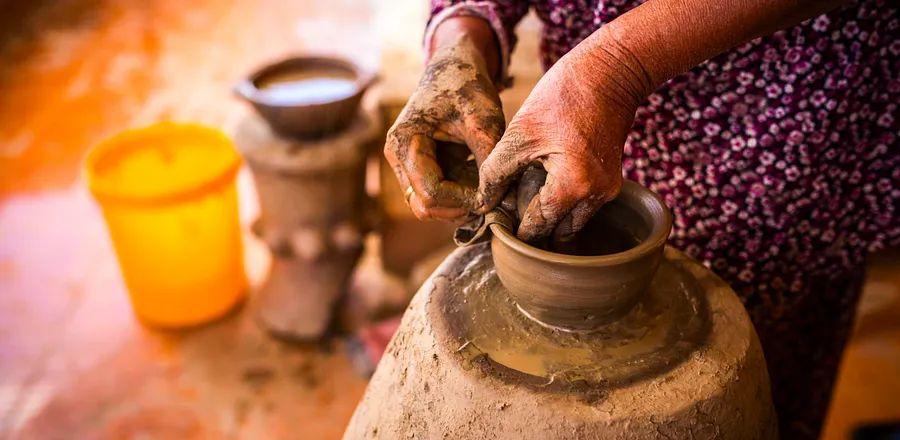What Are the UNESCO Intangible Cultural Heritage Lists and Their Contents?

Singapore’s hawker centers. The French baguette. Congolese rumba. These and many others have recently gained attention for their inclusion in the UNESCO Intangible Cultural Heritage lists. Have you ever pondered what these lists entail, who manages them, and the advantages of being featured? Continue reading…
What is UNESCO and its role in heritage protection?
UNESCO, short for the United Nations Educational, Scientific and Cultural Organization, is a UN agency consisting of around 200 member countries. Its origins can be traced back to the aftermath of World War II, with a mission to foster “peace and security by encouraging international collaboration in education, science, culture, communication, and information.”
You might know of its World Heritage List, which identifies over 1,000 cultural and natural locations worldwide designated for preservation since the World Heritage Convention was established in 1972. This list features iconic sites like the Great Wall of China and Machu Picchu in Peru. Recently, UNESCO has added 20 new sites from Ukraine, along with recent inclusions such as Europe’s spa towns and Iran’s transnational railway.
The convention has several objectives: to motivate member states to propose sites for inclusion on the list and to develop conservation management strategies for those sites; to offer technical support for their preservation; and to engage local communities in these efforts. UNESCO also promotes public awareness and fosters international collaboration.
Celebrating its 50th anniversary in 2022, the convention declared climate change as the greatest threat to World Heritage Sites and announced that 52 of these sites were on its List of World Heritage in Danger. (That figure has now risen to 55).
What constitutes the UNESCO Intangible Cultural Heritage lists?
UNESCO’s efforts extend beyond tangible elements like buildings, coral reefs, national parks, and urban areas. The organization also aims to safeguard intangible aspects such as cultures, customs, and traditions. This is where the UNESCO Intangible Cultural Heritage lists come into play.
These lists are published by the Intergovernmental Committee for the Safeguarding of Intangible Cultural Heritage, which includes representatives from 24 member countries worldwide. This committee convenes annually to determine what should be added. As of now, UNESCO’s website lists approximately 676 items across 140 countries.
The Intangible Cultural Heritage Lists consist of three distinct categories. An item may be included in the Register of Good Safekeeping Practices, the Representative List of the Intangible Cultural Heritage of Humanity, or, in cases requiring immediate attention, the List of Intangible Cultural Heritage in Need of Urgent Safeguarding.
To qualify for that third list, an item must demonstrate that it is “at risk of losing its viability” despite the efforts of local communities or the nation, facing “serious threats that make its survival unlikely without prompt safeguarding.”
What constitutes UNESCO Intangible Cultural Heritage?
But what does it truly mean? UNESCO describes intangible cultural heritage as encompassing “traditions or living expressions passed down from our ancestors to our descendants,” providing these examples:
- Oral traditions
- Performing arts
- Social customs
- Rituals
- Festive celebrations
- Knowledge and practices related to nature and the cosmos
- Skills for crafting traditional crafts
Illustrations of UNESCO Intangible Cultural Heritage
In 2022, notable additions included the traditional processes of Chinese tea, Korean masked dance dramas, Algerian folk songs, and France's famed baguette (with approximately 400 bakeries closing annually).
The urgent safeguarding list notably included:
- the traditional pottery making by Vietnam’s Chăm community
- Ukraine’s rich culture of borscht preparation
- traditional Ahlat stone carving in Türkiye
In 2021, the Durga Puja festival, celebrated in September or October in West Bengal, India, was inscribed, along with other traditions. In 2020, Singapore’s hawker culture, focused on communal dining, was recognized. Both entries were included in the representative list rather than the urgent safeguarding list. (For insights, check out Dinogo’s Charlene Fang’s excellent roundup of the top hawker centers in Singapore.)
What advantages come with being listed by UNESCO?
According to UNESCO, being inscribed on the list enhances the visibility of these items, which might otherwise face risks of decontextualization or appropriation.
Member states can also seek funding from an Intangible Cultural Heritage Fund. This financial support can aid in creating inventories of endangered items and facilitate “programmes, projects, and activities focused on safeguarding Intangible Cultural Heritage at national, subregional, and regional levels.” Additionally, there are emergency funds available for situations like natural disasters.
Inscription also requires member states to submit regular updates on the condition of the item, along with information on safeguarding strategies and community involvement.
How can I contribute to the preservation of endangered traditions?
I recently contributed to a Dinogo Answers page discussing how to respectfully engage with cultures during your travels, offering tips and insights to aid in planning future journeys. The UK’s Heritage Crafts Association works to safeguard endangered crafts, and their website is a rich resource for those looking to support these efforts. Similarly, the UN’s World Tourism Organization’s Best Tourism Villages list highlights locations where cultural traditions are cherished and preserved.
As noted by UNESCO, living heritage faces ongoing threats from various factors such as environmental changes, demographic shifts, and economic pressures—making the need for protection more critical than ever.
Evaluation :
5/5



